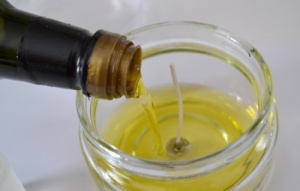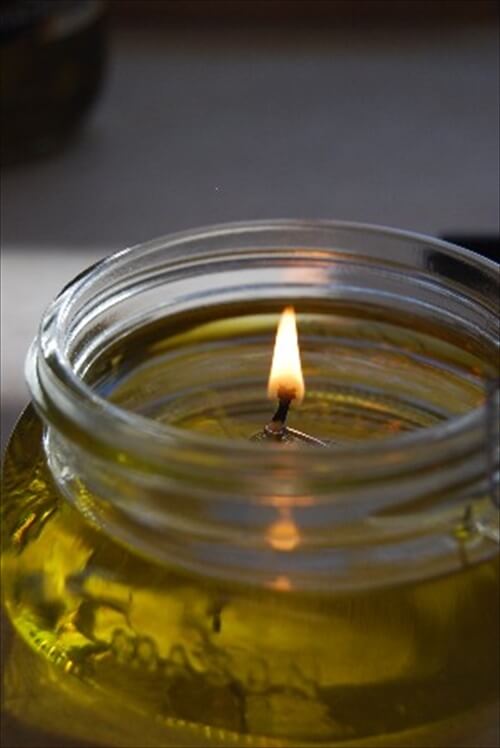Ideas to Recycle Used Cooking Oil


Written and verified by psychologist Valeria Sabater
This combination of detergent and oil is also very dangerous for the environment, so you should definitely keep this in mind and try out these interesting options to properly recycle used cooking oil.
Are you ready to get started?
Negative effects of used cooking oil on the environment
Oftentimes, we’re not conscious of the fact that our daily actions have an impact on the environment. A piece of paper thrown out in a field, a plastic bottle left on the beach, and that used cooking oil we pour down the drain… All of these actions have consequences that we should keep in mind.

- Used cooking oil clogs up pipes. When it mixes with chemicals such as softeners and detergents, it creates a hard layer that traps residue and bacteria. This causes drains to smell bad and increases the risk of cockroaches and rodents showing up in your kitchen.
- You should also keep in mind that repairing your clogged drains is a costly procedure.
- Do you know what happens when used cooking oil makes its way to rivers or the ocean? Oil, as we all know, doesn’t mix with water; rather, it floats on top and creates a sort of barrier layer that keeps the water from becoming properly oxygenated. This causes the animals in these waters to die.
- Part of this oil sticks to fish gills and scales.
- If you throw your used cooking oil out in your back yard, in the long term, that dirt will become infertile land.
Read also:
Ideas to recycle used cooking oil

1. Homemade laundry detergent
You will need the following products:
- 1 liter of used oil.
- 200 grams of washing soda.
- 10 liters of water.
- 100 grams of lavender oil.
To prepare this homemade detergent, follow these steps:
- Find a well ventilated area far away from children and pets. Put on rubber gloves and protective eyewear.
- Start by pouring 5 liters of cold water into a bucket.
- Then, pour the washing soda in little by little, being careful not to splash yourself with it. Use a wooden pole to stir this mixture and avoid inhaling the vapors that come off of it. It’s a dangerous mixture, and if it starts heating up and spattering, it could burn you.
- Now, pour the used cooking oil into the bucket while stirring. Once you’ve achieved a uniform mixture, add the lavender oil, as well.
- You should make sure to constantly stir the mixture and, above all, be patient. This is a long process that will take more than half an hour during which you should never stop stirring with the wooden pole. Little by little, you’ll see the mixture begin to take on a new, thicker consistency.
- Now, let this homemade detergent set for an entire day. After 24 hours have gone by, add the other 5 liters of water and stir vigorously. Again, let the mixture set.
- You should repeat this process for 5 days. Stir it each morning (you don’t need to add any more water). You’ll see it become thicker until it starts to look like the detergent you buy at the supermarket. After 5 days have gone by, you can store the mixture in a container and start using it. It’s great!
Read also:
Make a Homemade Fabric Softener in 5 Easy Steps
2. Homemade candles with used cooking oil
You will need the following products:
- A pretty jar that will serve as a container for the candle.
- A wire that will be the base for the wick.
- A cotton wick (it should be about 4 centimeters longer than the height of the jar).
- Used cooking oil, enough to fill the jar you’ve chosen.
- 2 drops of sandalwood oil.
How do you make it?
- It’s really easy. First, you should let the used cooking oil that you’re going to use for the candle set overnight. On the following day, filter it with a piece of cloth so you can remove any residue and make the oil cleaner.
- Now, it’s time to prepare the candlewick. Use a bit of wire to make the base. The cotton wick should be able to stand up in the middle of the candle and keep the candle lit. To do that, create a small base by making a coil with the wire and then sticking the wick in it (see the photo above).
- Next step? Set the wire with the cotton wick in the middle of the jar and then pour the used cooking oil in, making sure not to fill the jar to the brim. Finally, add a few drops of sandalwood oil.
- Wasn’t that easy? Now you can light your homemade candle.
All cited sources were thoroughly reviewed by our team to ensure their quality, reliability, currency, and validity. The bibliography of this article was considered reliable and of academic or scientific accuracy.
- Li HL, Yu PH. Conversion of waste cooking oils into environmentally friendly biodiesel. Springerplus. 2015;
- Nowak P, Kucharska K, Kamiński M. Ecological and health effects of lubricant oils emitted into the environment. International Journal of Environmental Research and Public Health. 2019.
- Mannu A, Ferro M, Dugoni GC, Panzeri W, Petretto GL, Urgeghe P, et al. Improving the recycling technology of waste cooking oils: Chemical fingerprint as tool for non-biodiesel application. Waste Manag. 2019;
This text is provided for informational purposes only and does not replace consultation with a professional. If in doubt, consult your specialist.








